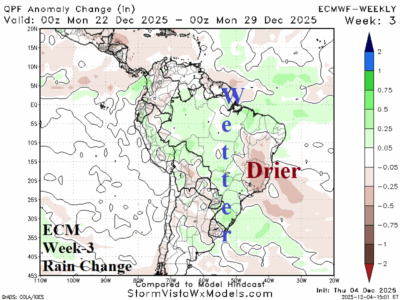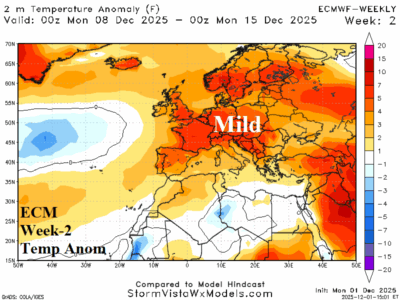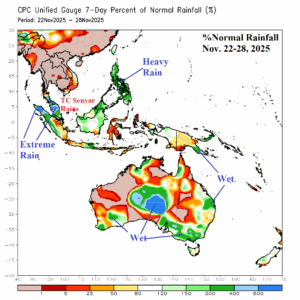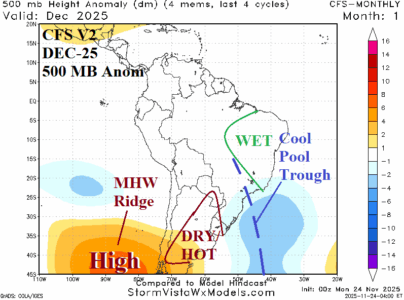12/05/2025, 6:22 am EST
An upper trough on the Southeast Brazil Coast as projected by climate forecasts for early calendar summer is not there. Instead, weak low pressure across Central Brazil fuels wetter than normal conditions for Central Brazil while East Brazil is trending drier. Argentina is drier and hotter than normal.




